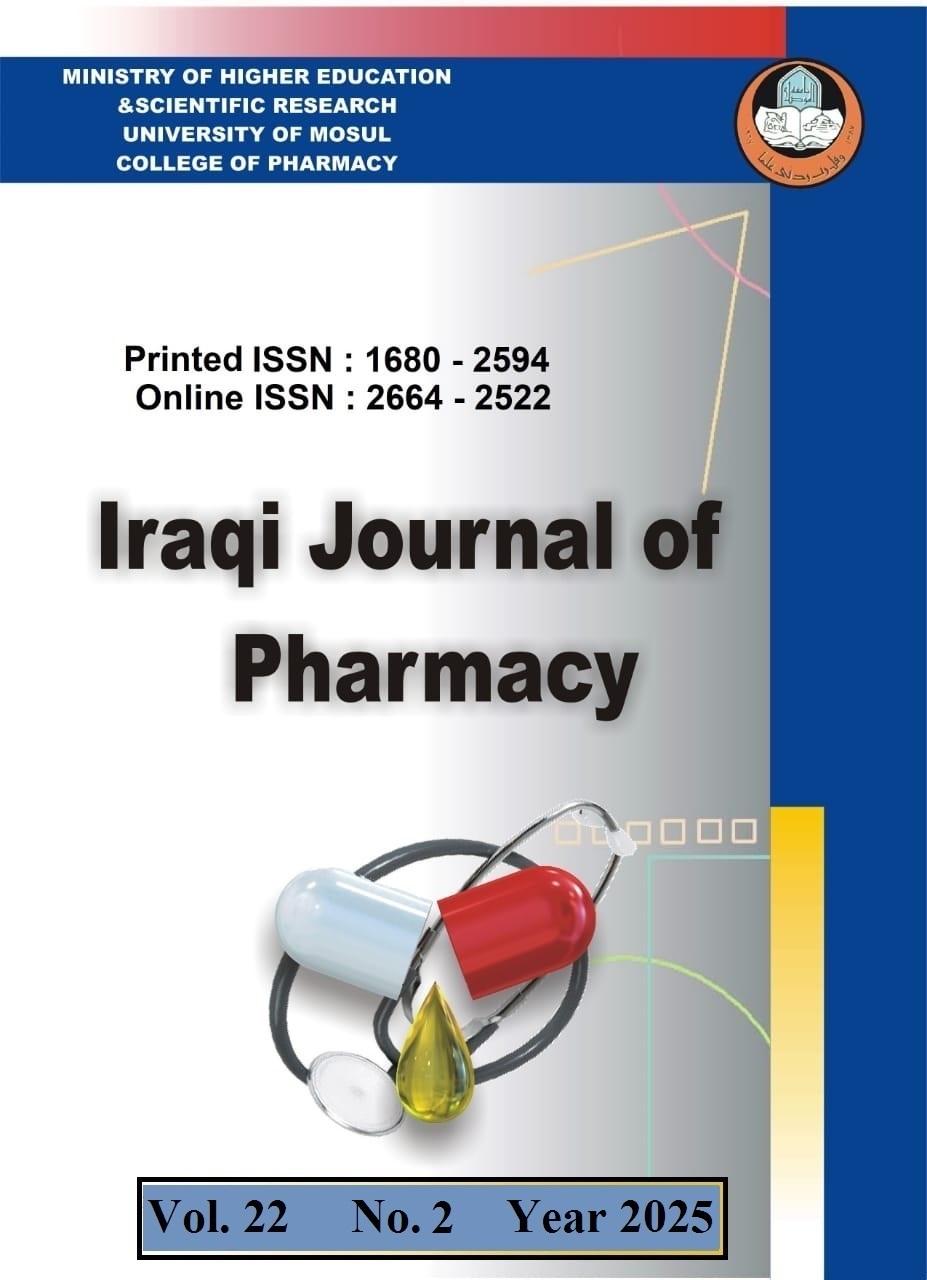Principles and New Strategies in Diabetic Foot Management
Abstract
Background: Diabetic foot ulcers (DFU) occur in up to 15% of all diabetic patients and are a leading cause of nontraumatic amputation worldwide. DFUs require identifying the etiology and assessing the co-morbidities to provide the correct therapeutic approach, essential to reducing lower-extremity amputation risk.The high rates of therapy failure have resulted in the development of new therapies. Aim: Highlight the current trends in DFU management that could replace or complement the classical strategy for the management of DFU, as well as selective and targeted strategies that are needed to improve the healing process. Method: The authors, with precision, conducted an exhaustive literature search by thoroughly exploring the Science Direct, Scopus, PubMed, and Web of Science databases. They specifically sought out published studies and original articles that were featured in esteemed peer-reviewed journals and reported on original research. Conclusion: These new techniques are promising but still mostly unproven. New and generally more expensive therapies should be seen as adding to traditional approaches and not a replacement for conventional approaches.
References
- Alavi A, Sibbald RG, Mayer D, Goodman L, Botros M, Armstrong DG, et al. Diabetic foot ulcers: Part I. Pathophysiology and prevention. American Academy of Dermatology 2014;70(1):1.e-18; quiz 9-20.
- Alavi A, Sibbald RG, Mayer D, Goodman L, Botros M, Armstrong DG, et al. Diabetic foot ulcers: Part II. Management. Journal of the American Academy of Dermatology 2014;70(1):21.e1-.e4.
- Alexiadou K, Doupis J. Management of Diabetic Foot Ulcers. Diabetes Therapy 2012;3(1):4.
- Alizadeh S, Seyedalipour B, Shafieyan S, Kheime A, Mohammadi P, Aghdami N. Copper nanoparticles promote rapid wound healing in acute full thickness defect via acceleration of skin cell migration, proliferation, and neovascularization. Biochemical and biophysical research communications 2019;517(4):684-90.
- Arafa MG, El-Kased RF, Elmazar MM. Thermoresponsive gels containing gold nanoparticles as smart antibacterial and wound healing agents. Scientific reports 2018;8(1):13674.
- Atkin L. Understanding methods of wound debridement. British Journal of Nursing 2014;23(sup12):S10-S5.
- Attinger CE, Bulan E, Blume PA. Surgical dbridement. The key to successful wound healing and reconstruction. Clinics in Podiatric Medicine and Surgery 2000;17(4):599-630.
- Attinger CE, Janis JE, Steinberg J, Schwartz J, Al-Attar A, Couch K. Clinical approach to wounds: debridement and wound bed preparation including the use of dressings and wound-healing adjuvants. Plastic and Reconstructive Surgery 2006;117(7 Suppl):72S-109S.
- Balaure PC, Holban AM, Grumezescu AM, Mogoanu GD, Bleanu TA, Stan MS, et al. In vitro and in vivo studies of novel fabricated bioactive dressings based on collagen and zinc oxide 3D scaffolds. International journal of pharmaceutics 2019;557:199-207.
- Blakely M. The Use of Best Practice in the Treatment of a Complex Diabetic Foot Ulcer: A Case Report. Healthcare (Basel) 2016;4(1).
- Blanco-Fernandez B, Castao O, Mateos-Timoneda M, Engel E, Prez-Amodio S. Nanotechnology Approaches in Chronic Wound Healing. Advances in Wound Care 2020;10(5):234-56.
- Boulton AJ. The pathway to foot ulceration in diabetes. Medical Clinics 2013;97(5):775-90.
- Braddock M, Campbell CJ, Zuder D. Current therapies for wound healing: electrical stimulation, biological therapeutics, and the potential for gene therapy. International journal of dermatology 1999;38(11):808-17.
- Brem H, Tomic-Canic M. Cellular and molecular basis of wound healing in diabetes. The Journal of Clinical Investigation 2007;117(5):1219-22.
- Bus SA. Priorities in offloading the diabetic foot. Diabetes/Metabolism Research and Reviews 2012;28(S1):54-9.
- Calles-Escandn J, Lovato LC, Simons-Morton DG, Kendall DM, Pop-Busui R, Cohen RM, et al. Effect of intensive compared with standard glycemia treatment strategies on mortality by baseline subgroup characteristics: the Action to Control Cardiovascular Risk in Diabetes (ACCORD) trial. Diabetes Care 2010;33(4):721-7.
- Casciaro B, Lin Q, Afonin S, Loffredo MR, de Turris V, Middel V, et al. Inhibition of Pseudomonas aeruginosa biofilm formation and expression of virulence genes by selective epimerization in the peptide Esculentin1a (121) NH 2. The FEBS journal. 2019;286(19):3874-91.
- Cazander G, den Ottelander BK, Kamga S, Doomen MCHA, Damen THC, van Well AME. Importance of Debriding and Wound Cleansing Agents in Wound Healing. Therapeutic Dressings and Wound Healing Applications 2020. p. 59-89.
- Chatterjee AK, Chakraborty R, Basu T. Mechanism of antibacterial activity of copper nanoparticles. Nanotechnology 2014;25(13):135101.
- Chvez-Reyes J, Escrcega-Gonzlez CE, Chavira-Surez E, Len-Buitimea A, Vzquez-Len P, Morones-Ramrez JR, et al. Susceptibility for Some Infectious Diseases in Patients With Diabetes: The Key Role of Glycemia. Front Public Health 2021;9:559595.
- Clark RAF, Ghosh K, Tonnesen MG. Tissue Engineering for Cutaneous Wounds. Journal of Investigative Dermatology 2007;127(5):1018-29.
- Cristea OM, Avrmescu CS, Bloiu M, Popescu FD, Popescu F, Amzoiu MO. Urinary tract infection with Klebsiella pneumoniae in Patients with Chronic Kidney Disease. Current Health Sciences Journal 2017;43(2):137-48.
- Da Silva J, Leal EC, Carvalho E. Bioactive Antimicrobial Peptides as Therapeutic Agents for Infected Diabetic Foot Ulcers. Biomolecules 2021;11(12):1894.
- Duplessis CA, Biswas B. A Review of Topical Phage Therapy for Chronically Infected Wounds and Preparations for a Randomized Adaptive Clinical Trial Evaluating Topical Phage Therapy in Chronically Infected Diabetic Foot Ulcers. Antibiotics 2020;9(7):377.
- Engler AJ, Sen S, Sweeney HL, Discher DE. Matrix elasticity directs stem cell lineage specification. Cell 2006;126(4):677-89.
- Feitosa MCP, Carvalho AFMd, Feitosa VC, Coelho IM, Oliveira RAd, Arisawa EL. Effects of the Low-Level Laser Therapy (LLLT) in the process of healing diabetic foot ulcers. Acta cirurgica brasileira 2015;30:852-7.
- Forsythe RO, Brownrigg J, Hinchliffe RJ. Peripheral arterial disease and revascularization of the diabetic foot. Diabetes, Obesity and Metabolism 2015;17(5):435-44.
- Gethin G, Cowman S, Kolbach DN. Debridement for venous leg ulcers. The Cochrane Database of Systematic Reviews 2015;2015(9):Cd008599.
- Ghanim zs, Alkotaji M, Qazzaz ME. Insight into Topical Preparations for Wound Healing: Traditional and Modern Dressings. Al- Anbar Medical Journal 2023;19(2):89-97.
- Gomes A, Teixeira C, Ferraz R, Prudncio C, Gomes P. Wound-Healing Peptides for Treatment of Chronic Diabetic Foot Ulcers and Other Infected Skin Injuries. Molecules 2017;22(10):1743.
- Gowda BHJ, Mohanto S, Singh A, Bhunia A, Abdelgawad MA, Ghosh S, et al. Nanoparticle-based therapeutic approaches for wound healing: a review of the state-of-the-art. Materials Today Chemistry 2023;27:101319.
- Haldar J, Mukherjee P, Mukhopadhyay S, Maiti PK. Isolation of bacteria from diabetic foot ulcers with special reference to anaerobe isolation by simple two-step combustion technique in candle jar. The Indian Journal of Medical Research 2017;145(1):97.
- Hemler SL, Ntella SL, Jeanmonod K, Kchli C, Tiwari B, Civet Y, et al. Intelligent plantar pressure offloading for the prevention of diabetic foot ulcers and amputations. Frontiers in Endocrinology 2023;14.
- Heydari P, Varshosaz J, Zargar Kharazi A, Karbasi S. Preparation and evaluation of poly glycerol sebacate/poly hydroxy butyrate coreshell electrospun nanofibers with sequentially release of ciprofloxacin and simvastatin in wound dressings. Polymers for Advanced Technologies 2018;29(6):1795-803.
- Javed S, Alam U, Malik RA. Treating Diabetic Neuropathy: Present Strategies and Emerging Solutions. The Review of Diabetic Studies 2015;12(1-2):63-83.
- Jones K, Backhouse MR, Bruce J. Rehabilitation for people wearing offloading devices for diabetes-related foot ulcers: a systematic review and meta-analyses. Journal of Foot and Ankle Research 2023;16(1):16.
- Kajagar BM, Godhi AS, Pandit A, Khatri S. Efficacy of low level laser therapy on wound healing in patients with chronic diabetic foot ulcers-a randomised control trial. Indian Journal of Surgery 2012;74(5):359-63.
- Karmaker M, Sanyal SK, Sultana M, Hossain M. Association of bacteria in diabetic and non-diabetic foot infectionAn investigation in patients from Bangladesh. Journal of infection and public health 2016;9(3):267-77.
- Kim J, Nomkhondorj O, An CY, Choi YC, Cho J. Management of diabetic foot ulcers: a narrative review. Journal of Yeungnam Medical Science 2023;40(4):335-42.
- Kudo T, Chandra FA, Kwun W-H, Haas BT, Ahn SS. Changing pattern of surgical revascularization for critical limb ischemia over 12 years: endovascular vs open bypass surgery. Journal of vascular surgery 2006;44(2):304-13.
- Lan CC, Wu CS, Huang SM, Kuo HY, Wu IH, Liang C, et al. Highglucose environment reduces human defensin2 expression in human keratinocytes: implications for poor diabetic wound healing. British Journal of Dermatology 2012;166(6):1221-9.
- Lebrun E, TomicCanic M, Kirsner RS. The role of surgical debridement in healing of diabetic foot ulcers. Wound repair and regeneration 2010;18(5):433-8.
- Lipsky BA, Senneville , Abbas ZG, AragnSnchez J, Diggle M, Embil JM, et al. Guidelines on the diagnosis and treatment of foot infection in persons with diabetes (IWGDF 2019 update). Diabetes/metabolism research and reviews 2020;36:e3280.
- Liu H, Duan Z, Tang J, Lv Q, Rong M, Lai R. A short peptide from frog skin accelerates diabetic wound healing. The FEBS journal 2014;281(20):4633-43.
- Lozeau LD, Grosha J, Kole D, Prifti F, Dominko T, Camesano TA, et al. Collagen tethering of synthetic human antimicrobial peptides cathelicidin LL37 and its effects on antimicrobial activity and cytotoxicity. Acta biomaterialia 2017;52:9-20.
- Lumbers M. Wound debridement: choices and practice. British Journal of Nursing 2018;27(15):S16-S20.
- Lutolf MP, Hubbell JA. Synthetic biomaterials as instructive extracellular microenvironments for morphogenesis in tissue engineering. Nature Biotechnology 2005;23(1):47-55.
- Mangoni ML, McDermott AM, Zasloff M. Antimicrobial peptides and wound healing: biological and therapeutic considerations. Experimental dermatology 2016;25(3):167-73.
- Marambio-Jones C, Hoek EM. A review of the antibacterial effects of silver nanomaterials and potential implications for human health and the environment. Journal of nanoparticle research 2010;12:1531-51.
- Mavrogenis AF, Megaloikonomos PD, Antoniadou T, Igoumenou VG, Panagopoulos GN, Dimopoulos L, et al. Current concepts for the evaluation and management of diabetic foot ulcers. EFORT Open Reviews 2018;3(9):513-25.
- Mehier-Humbert S, Guy RH. Physical methods for gene transfer: improving the kinetics of gene delivery into cells. Advanced drug delivery reviews 2005;57(5):733-53.
- Mendes JJ, Leandro CI, Bonaparte DP, Pinto AL. A rat model of diabetic wound infection for the evaluation of topical antimicrobial therapies. Comparative medicine 2012;62(1):37-48.
- Monteiro N, Martins M, Martins A, Fonseca NA, Moreira JN, Reis RL, et al. Antibacterial activity of chitosan nanofiber meshes with liposomes immobilized releasing gentamicin. Acta biomaterialia 2015;18:196-205.
- Mosca RC, Ong AA, Albasha O, Bass K, Arany P. Photobiomodulation Therapy for Wound Care: A Potent, Noninvasive, Photoceutical Approach. Advances in Skin & Wound Care 2019;32(4):157-67.
- Nanotechnology Approaches in Chronic Wound Healing. Advances in Wound Care 2021;10(5):234-56.
- Naskar A, Bera S, Bhattacharya R, Saha P, Roy SS, Sen T, et al. Synthesis, characterization and antibacterial activity of Ag incorporated ZnOgraphene nanocomposites. RSC advances 2016;6(91):88751-61.
- Naskar A, Lee S, Kim K-s. Antibacterial potential of Ni-doped zinc oxide nanostructure: Comparatively more effective against Gram-negative bacteria including multi-drug resistant strains. RSC advances 2020;10(3):1232-42.
- Navarro X, Sutherland DE, Kennedy WR. Long-term effects of pancreatic transplantation on diabetic neuropathy. Annals of Neurology 1997;42(5):727-36.
- Normahani P, Shalhoub J. Diabetic foot disease. Surgery (Oxford) 2022;40(1):53-61.
- OBrien M. Exploring methods of wound debridement. British Journal of Community Nursing 2002;7(Sup3):10-8.
- Oliveira A, Simes S, Ascenso A, Reis CP. Therapeutic advances in wound healing. Journal of Dermatological Treatment 2022;33(1):2-22.
- Pacioni N, Borsarelli C, Veglia A. Synthetic Routes for the Preparation of Silver Nanoparticles: A Mechanistic Perspective. 2015. p. 13-46.
- Perez-Favila A, Martinez-Fierro ML, Rodriguez-Lazalde JG, Cid-Baez MA, Zamudio-Osuna MdJ, Martinez-Blanco MdR, et al. Current Therapeutic Strategies in Diabetic Foot Ulcers. Medicina 2019;55(11):714.6. Shaw JE, Boulton AJ. The pathogenesis of diabetic foot problems: an overview. Diabetes 1997;46 Suppl 2:S58-61.
- Pinto AM, Cerqueira MA, Baobre-Lpes M, Pastrana LM, Sillankorva S. Bacteriophages for Chronic Wound Treatment: From Traditional to Novel Delivery Systems. Viruses 2020;12(2):235.
- Qureshi Z, Ali MN, Khalid M. An Insight into Potential Pharmacotherapeutic Agents for Painful Diabetic Neuropathy. Journal of Diabetes Research 2022;2022:9989272.
- Raghav A, Khan ZA, Labala RK, Ahmad J, Noor S, Mishra BK. Financial burden of diabetic foot ulcers to world: a progressive topic to discuss always. Therapeutic Advances in Endocrinology and Metabolism 2018;9(1):29-31.
- Rahmani S, Mooney DJ. Tissue-Engineered Wound Dressings for Diabetic Foot Ulcers. In: Veves A, Giurini JM, Guzman RJ, editors. The Diabetic Foot: Medical and Surgical Management. Cham: Springer International Publishing; 2018. p. 247-56.
- Ramirez-Acua JM, Cardenas-Cadena SA, Marquez-Salas PA, Garza-Veloz I, Perez-Favila A, Cid-Baez MA, et al. Diabetic Foot Ulcers: Current Advances in Antimicrobial Therapies and Emerging Treatments. Antibiotics 2019;8(4):193.
- Riha SM, Maarof M, Fauzi MB. Synergistic Effect of Biomaterial and Stem Cell for Skin Tissue Engineering in Cutaneous Wound Healing: A Concise Review. Polymers 2021;13(10):1546.
- Rosyid FN. Etiology, pathophysiology, diagnosis and management of diabetics foot ulcer. International Journal of Research in Medical Sciences 2017;5(10):4206-13.
- Schaper NC, van Netten JJ, Apelqvist J, Bus SA, Hinchliffe RJ, Lipsky BA. Practical Guidelines on the prevention and management of diabetic foot disease (IWGDF 2019 update). Diabetes/Metabolism Research and Reviews 2020;36 Suppl 1:e3266.
- Segall AM, Roach DR, Strathdee SA. Stronger together? Perspectives on phage-antibiotic synergy in clinical applications of phage therapy. Current opinion in microbiology 2019;51:46-50.
- Shieh S-J, Terada S, Vacanti JP. Tissue engineering auricular reconstruction: in vitro and in vivo studies. Biomaterials 2004;25(9):1545-57.
- Sood A, Granick MS, Tomaselli NL. Wound Dressings and Comparative Effectiveness Data. Advances in Wound Care 2014;3(8):511-29.
- Ter Horst B, Chouhan G, Moiemen NS, Grover LM. Advances in keratinocyte delivery in burn wound care. Advanced drug delivery reviews 2018;123:18-32.
- Thapa RK, Kiick KL, Sullivan MO. Encapsulation of collagen mimetic peptide-tethered vancomycin liposomes in collagen-based scaffolds for infection control in wounds. Acta biomaterialia 2020;103:115-28.
- Tottoli EM, Dorati R, Genta I, Chiesa E, Pisani S, Conti B. Skin wound healing process and new emerging technologies for skin wound care and regeneration. Pharmaceutics 2020;12(8):735.
- Vallianou N, Evangelopoulos A, Koutalas P. Alpha-lipoic Acid and diabetic neuropathy. The Review of Diabetic Study 2009;6(4):230-6.
- Vileikyte L. Diabetic foot ulcers: a quality of life issue. Diabetes/Metabolism Research and Reviews 2001;17(4):246-9.
- Wang X, Yuan C-X, Xu B, Yu Z. Diabetic foot ulcers: Classification, risk factors and management. World journal of diabetes 2022;13(12):1049.
- Wells D. Gene therapy progress and prospects: electroporation and other physical methods. Gene therapy 2004;11(18):1363-9.
- Yang X, Guo J-L, Han J, Si R-J, Liu P-P, Zhang Z-R, et al. Chitosan hydrogel encapsulated with LL-37 peptide promotes deep tissue injury healing in a mouse model. Military Medical Research 2020;7:1-10.
- Yazdanpanah L, Nasiri M, Adarvishi S. Literature review on the management of diabetic foot ulcer. World Journal of Diabetes 2015;6(1):37-53.
- Young MJ, Hall LM, Jones JD. Phage therapy for diabetic foot infection. Diabetic Foot 2022;25(4):29.
- Young MJ, Hall LML, Merabishvilli M, Pirnay J-P, Clark JR, Jones JD. Phage Therapy for Diabetic Foot Infection: A Case Series. Clinical Therapeutics 2023;45(8):797-801.
- Zubair M, Malik A, Ahmad J. Clinico-microbiological study and antimicrobial drug resistance profile of diabetic foot infections in North India. Foot (Edinb) 2011;21(1):6-14.








